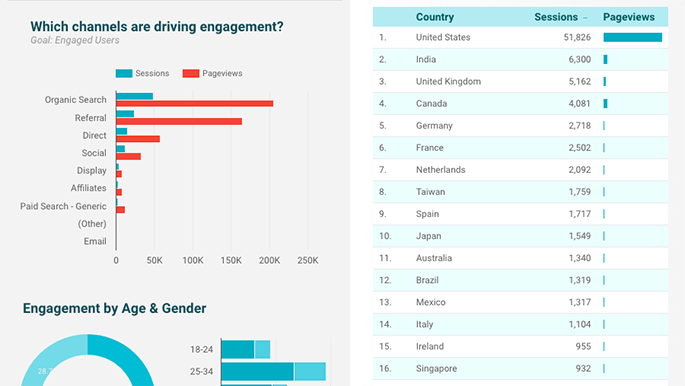If you’re about to embark on a website redesign, proper planning and strategy go a long way. A website is much more than a place to list your core services or post your latest blog articles—it’s a place where opportunities are won or lost depending on whether your website’s visitors’ needs are being met.
One key to a successful website redesign strategy is understanding what your website visitors want. Each and every website will have different goals. Taking the time to plan out your website is crucial to its success. Asking and answering the questions below about your website’s visitors will save you time, money and heartache, but most importantly it will lead to more opportunities for your business.
Here are 3 strategic user questions you need answered before embarking on a website redesign.
1. Who is your audience?
If your website effectively speaks to every user, your website should be very successful. So how do you define your website’s audience? Analytics is a great place to start. With the help of Google Analytics you can see demographics of your users such as:
- age
- gender
- income
- where the user is located
- what type of web browser or device they are using to view your website
- website pages of importance to them
- how long they remain engaged with your website, and more
You likely have an idea of your client base but it also helps to interview them in order to understand them better. Your clients can provide valuable user insights. This is helpful in the event that your existing site is underperforming, which could translate to inaccurate analytics, making it especially wise to offset quirks in analytics with interviews. You want to have a clear understanding and picture of the users who are visiting your website in order to design and build a website that is more appealing to them and valuable to your company.

Armed with analytics and interview data, user personas are created. A user persona is a representation of the goals and behaviors of a hypothesized group of users. The user persona provides a human “face” and creates empathy for the persons represented by the demographics. It will help you speak directly to their needs, wants, and pain points on the website.
Here is a partial example of a user persona we defined for a non-profit organization:

Lisa took her first acting class when she was seven years old. Since then, her single-minded drive to become an actress led her to star in all of her public high school theatrical productions and join a theatrical club that meets weekly. Seeing the need to continue her education elsewhere, Lisa began searching for the best summer programs in the tri-state area. From her search, she learned about the summer musical conservatory program. Lisa is now preparing to audition to get accepted into this program.
2. What are the primary actions every type of website visitor needs to take?
Understanding your website’s visitors can help you plan and design a conversion funnel for the website. A conversion funnel is a step-by-step process that engages a user and helps guide and inspire them to take a particular action. Filling out a form to register for receiving emails on a topic is an example of an action. User needs should be translated into actionable design directives.
Each website visitor should take a primary action when they visit a website. For example, in the user persona mentioned above, “Lisa” may want to learn more about the summer conservatory program and then apply for the program. Making the application process easy for that user to find and complete is of utmost importance for the website’s success.
Some examples of a primary action are:
- completing a form to gain access to a pdf or white paper report
- making a purchase
- watching a video
- clicking the “call now” button on your phone
3. What are your goals with the website/users and how will they be measured/considered a success?
To take a step back, the whole reason you should take a close look at your website users is to drive the success of your website. You should be able to quantify success in your own terms when undergoing the website creation process, so pick goals for each user or for the website in general.
It’s possible to measure your goals using Google Analytics — a free tool. For example, a measure of success could be an increase in completed submissions on the signup form by 20% over the coming four months. A general goal for the whole website could be to increase the time an average visitor spends on your website or each page. Or simply increase sales of your online products.
Trillion can be your strategic web partner
At Trillion, we begin each website redesign project by reviewing the questions above and more. We utilize analytics to help plan your website and then strategically design and develop it. We create websites for businesses ranging from regional nonprofits to service-based companies dependent on digital lead-generation. Check out websites we’ve built from the ground up. If you’re ready to create a new and effective website, fill out our contact form or give us a call at 908.219.4703.







